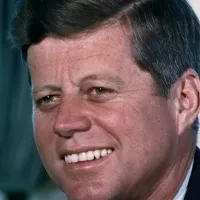JetBlue Airways is an American low-cost airline based in Long Island City, Queens, New York City. It operates primarily as a point-to-point carrier with a network spanning the Americas and Europe. Its main hub is at New York City's John F. Kennedy International Airport, and it has six focus cities. JetBlue is not part of any global airline alliances, but has codeshare agreements with airlines from Oneworld, SkyTeam, and Star Alliance.
1911: Brewster Building Constructed
JetBlue's headquarters are in the Brewster Building in Long Island City, New York—a building designed by architects Stephenson & Wheeler for the Brewster automobile factory in 1911.
August 1998: JetBlue Incorporation
In August 1998, JetBlue was incorporated in Delaware with its headquarters in Forest Hills, Queens.
1998: New Air Foundation Opposed by IAM
In 1998, the IAM opposed JetBlue's creation when it was founded as New Air.
August 1999: JetBlue (NewAir) Founded
In August 1999, David Neeleman founded JetBlue under the name "NewAir", following a low-cost travel approach similar to Southwest Airlines but with added amenities.
September 1999: JetBlue Awarded Slots at JFK
In September 1999, JetBlue was awarded 75 initial take-off/landing slots at John F. Kennedy International Airport.
February 11, 2000: JetBlue Commences Operations
On February 11, 2000, JetBlue commenced operations with services to Buffalo and Fort Lauderdale.
February 2000: USDOT Authorization Received
In February 2000, JetBlue received its USDOT CPCN authorization.
April 2000: In-flight entertainment introduced
In April 2000, JetBlue became the first airline to offer all passengers personalized in-flight entertainment by installing flat-screen monitors with live access to DirecTV channels in every seatback at no extra cost.
April 2002: JetBlue IPO
In April 2002, JetBlue's IPO took place, raising $260 million at its NASDAQ debut.
2002: JetBlue Acquires LiveTV
In 2002, JetBlue wholly acquired LiveTV, which provided seat back entertainment systems with Live Satellite Television and Live Satellite Radio.
2002: JetBlue IPO
JetBlue went public in 2002.
October 2005: Quarterly Profit Plunges
In October 2005, JetBlue's quarterly profit plunged from US$8.1 million to $2.7 million due to rising fuel costs and operational issues.
2005: First Ever Quarterly Loss
In 2005, JetBlue experienced its first-ever quarterly loss during the fourth quarter, losing $42.4 million, making them unprofitable for the entire year.
2005: Loss in 2005
JetBlue had a loss in 2005 of $20 million.
October 2006: Net Loss Announced
In October 2006, JetBlue announced a net loss of $500,000 for the third quarter, and a plan to regain that loss by deferring some of their E190 deliveries and by selling five of their A320s.
December 2006: Seats Removed from A320s
In December 2006, as part of their RTP plan, JetBlue removed a row of seats from their A320s to lighten the aircraft and reduce the cabin crew size.
2006: IAM Attempts to Unionize Ramp Workers
In 2006, the IAM attempted to unionize JetBlue's ramp service workers, but the union organizing petition was dismissed by the National Mediation Board.
January 2007: Return to Profitability
In January 2007, JetBlue returned to profitability with a fourth quarter profit in 2006, reversing a quarterly loss in the year-earlier period.
February 2007: Partnership with Aer Lingus
In February 2007, JetBlue announced its partnership with Irish flag carrier Aer Lingus to allow passengers to switch between airlines on a single ticket for flights with connections in either New York JFK or Boston.
February 2007: Blizzard Causes Operational Chaos
In February 2007, JetBlue faced a crisis when the blizzard of 2007 hit the Northeast and Midwest, throwing the airline's operations into chaos and reportedly costing JetBlue $30 million.
February 2007: Cancellation of Flights due to Winter Storms
In February 2007, JetBlue was forced to cancel nearly 1,700 flights due to winter storms.
May 10, 2007: Dave Barger Becomes CEO
On May 10, 2007, Dave Barger became JetBlue's new chief executive officer, replacing founder David Neeleman.
July 2007: Partnership with The Simpsons Movie
In July 2007, JetBlue partnered with 20th Century Fox's film "The Simpsons Movie" to become the "Official Airline of Springfield".
August 2007: Exclusive Content From The New York Times
In August 2007, JetBlue added exclusive content from The New York Times in the form of an in-flight video magazine.
November 8, 2007: Ed Barnes Appointed Interim CFO
On November 8, 2007, JetBlue appointed Ed Barnes as interim CFO, following the resignation of former CFO John Harvey.
December 13, 2007: Lufthansa to Purchase Stake in JetBlue
On December 13, 2007, JetBlue and Lufthansa announced JetBlue's intent to sell 19% of JetBlue to Lufthansa, pending approval from US regulators.
2007: Neeleman Steps Down
David Neeleman stepped down as CEO in 2007.
2007: Reliability Problems with Embraer E190 Fleet
In early 2007, JetBlue faced reliability problems with its Embraer E190 fleet and contracted ExpressJet to operate regional jets on behalf of JetBlue.
May 21, 2008: New Board of Directors Appointed
On May 21, 2008, JetBlue named Joel Peterson chairman and Frank Sica vice chairman of its board of directors, replacing David Neeleman.
August 4, 2008: Introduction of Purchased Pillow and Blanket Package
On August 4, 2008, JetBlue announced it would replace their recycled pillows and blankets with an "eco-friendly" pillow and blanket package that passengers would have to purchase.
September 2008: Charging for Extended Legroom Seats
In September 2008, JetBlue began charging passengers $10–30 for an extended-leg-room seat depending on the length of the flight.
September 2008: Campaign Aircraft for Sarah Palin
In September 2008, JetBlue began operating Republican vice presidential candidate Sarah Palin's campaign aircraft, an E190.
October 22, 2008: New Primary Hub at JFK Opens
On October 22, 2008, JetBlue opened its new primary hub at John F. Kennedy International Airport (JFK), Terminal 5, or simply T5.
April 2009: NYC Trying to Keep JetBlue in the City
In April 2009, Helen Marshall, the president of the Borough of Queens, said that the City of New York was trying to keep JetBlue in the city.
September 2009: TrueBlue Program Changes
In September 2009, JetBlue made changes to its TrueBlue program. In the new program, members receive three points for every dollar spent toward a flight, excluding taxes and fees, plus an additional three points for every dollar spent on a flight if booked online directly on the JetBlue.com website. Additional points are awarded if the member uses the Barclay's issued JetBlue Mastercard credit card to purchase the flight. The price of flights in points depend on the fare of the flight in U.S. dollars.
October 13, 2009: New Livery Unveiled
On October 13, 2009, JetBlue unveiled a modification to its livery in commemoration of the upcoming tenth anniversary of the airline in February 2010.
November 9, 2009: TrueBlue Program Launched
The new TrueBlue program launched on November 9, 2009. In the new program, members receive three points for every dollar spent toward a flight, excluding taxes and fees, plus an additional three points for every dollar spent on a flight if booked online directly on the JetBlue.com website.
2009: Ramada Plaza JFK Hotel Closes
In 2009, the Ramada Plaza JFK Hotel closed, and was later replaced by the TWA Hotel.
January 2010: Possible move of headquarters to Orlando discussed
In January 2010, JetBlue's CEO, Dave Barger, and Florida Governor Charlie Crist met in Tallahassee, Florida, to discuss the possibility of relocating the airline's headquarters to Orlando.
February 2010: JetBlue tenth anniversary
JetBlue's tenth anniversary will be in February 2010.
March 22, 2010: JetBlue to remain in New York City area
On March 22, 2010, JetBlue announced its headquarters would remain in the New York City area, specifically Long Island City. This decision was influenced by the airline's historical links to the city, the cost of staff relocations, the airline's need to retain access to financial markets, and the convenience of JFK Airport for its marketing partners Aer Lingus and Lufthansa. JetBlue also turned down incentives from the City of Orlando on March 22, 2010.
2010: Interline Booking Agreements
In 2010, JetBlue entered into interline booking agreements with South African Airways and American Airlines to facilitate luggage transfers between airlines.
2010: Codeshare Agreement with Lufthansa
In 2010, JetBlue made a codeshare agreement with Lufthansa and transitioned to the Sabre reservation system, enabling the airlines to sell tickets on each other's flights.
October 18, 2011: CFO Ed Barnes Resigns
On October 18, 2011, JetBlue's CFO Ed Barnes resigned, effective immediately. Mark Powers, the company's treasurer, was appointed as the interim CFO until a permanent replacement could be found.
2011: Interline Agreements Made with Virgin Atlantic and Jet Airways
In 2011, JetBlue entered into interline agreements with Virgin Atlantic and Jet Airways; however, these agreements have since been terminated.
2011: JetBlue Fleet Revamp
Since 2011, JetBlue intended to revamp its fleet with the introduction of 40 Airbus A320neos and made multiple order differentials.
June 13, 2012: JetBlue Ranks Highest in Customer Satisfaction for Eighth Year
On June 13, 2012, J.D. Power and Associates ranked JetBlue as "Highest in Customer Satisfaction Among Low Cost Carriers in North America" for the eighth consecutive year.
June 2013: TrueBlue Points Never Expire
In June 2013, JetBlue announced that TrueBlue points will never expire for any reason.
October 2013: JetBlue Introduced Mint Premium Cabin Service
In October 2013, JetBlue introduced Mint, a premium cabin service, for transcontinental and select Caribbean flights. The service would begin in 2014.
2013: "JetBlue Effect" Coined
Researchers from the Massachusetts Institute of Technology coined the term "JetBlue Effect" in 2013, describing how fares would drop after JetBlue entered a market.
April 22, 2014: JetBlue Pilots Vote to Unionize
On April 22, 2014, JetBlue's pilots voted to unionize for the first time since the airline's founding, with 71% of the ballots cast in favor of joining the ALPA (Air Line Pilots Association).
June 2014: JetBlue Sells LiveTV to Thales
In June 2014, JetBlue sold LiveTV to Thales for nearly $400 million.
September 18, 2014: Dave Barger Announces Resignation
On September 18, 2014, Dave Barger announced his resignation from JetBlue, effective February 16, 2015, following reports of investor and board dissatisfaction with his performance. He was replaced by Robin Hayes.
2014: Mint Business Class Cabin Introduced
In 2014, JetBlue introduced its version of a business class cabin, called Mint, originally available only on transcontinental domestic routes on select Airbus A321s. The seat design includes fully lie-flat seats, some with sliding panels for more privacy.
2014: Mint Service Begins
In 2014, JetBlue's Mint service began, utilizing Airbus A321-200 aircraft which feature winglets, lie-flat seats, and moveable partitions to create small suites. The planes were configured with 16 business-class seats and 143 economy seats.
2014: Core Seat Restyling
The airline re-styled Core seats in 2014 with the debut of JetBlue's first Airbus A321.
February 16, 2015: Robin Hayes replaces Dave Barger
Dave Barger's resignation came into effect on February 16, 2015, and he was replaced by Robin Hayes.
May 6, 2015: Granted license to commence charter flights to Cuba
On May 6, 2015, JetBlue was one of the first airlines to be granted a license to commence charter flights to Cuba, with flights departing from New York City.
July 2015: JetBlue began charging for bags
During the first few days of July 2015, JetBlue started charging for bags in certain booking classes. The cost was $20 for the first bag and $35 for the second, leaving Southwest Airlines the only major U.S. carrier to not charge for bags.
2015: Opening of JetBlue University Training Facility Lodge
In 2015, the JetBlue University training facility opened a 292-room lodge that houses trainees attending the facility, located in Orlando.
February 2016: JetBlue Technology Ventures (JTV) Established
In February 2016, JetBlue established JetBlue Technology Ventures (JTV), its venture capital subsidiary, with the primary objective of investing in and partnering with early-stage startups in the travel, hospitality, and transportation space.
July 2016: Announces Commercial Flights to Cuba
In July 2016, JetBlue announced that commercial flights from the United States to Cuba would commence in late August.
August 31, 2016: First scheduled commercial flight between the United States and Cuba in 55 years
On August 31, 2016, JetBlue Flight 387 became the first scheduled commercial flight between the United States and Cuba in 55 years, flying from Fort Lauderdale–Hollywood International Airport to Abel Santamaría Airport in Santa Clara.
October 25, 2016: JetBlue Invests in JetSuiteX
On October 25, 2016, JetBlue made a minority equity investment in JetSuiteX, also gaining a seat on JetSuite's board of directors.
November 2016: JetBlue painted one of their Airbus A320 aircraft in a 1960s retrojet livery
In November 2016, JetBlue painted one of their Airbus A320 aircraft, N763JB, in a 1960s retrojet livery, dubbed "What's Old is Blue Again". The livery's maiden flight was on Friday, from New York JFK to Palm Springs.
2016: Unsuccessful bid for Virgin America
In 2016, JetBlue unsuccessfully bid for Virgin America, which was eventually acquired by Alaska Air Group.
July 2017: JetBlue to Develop Terminal at JFK
In July 2017, JetBlue announced it was taking qualifications to develop a terminal at JFK that would occupy terminal 5 but also the space of terminals 6 and 7.
April 2018: Returns to Ontario International Airport
In April 2018, JetBlue announced their return to Ontario International Airport in southern California after ten years, as well as new service to Steamboat Springs in Colorado, and Bozeman in Montana.
November 2018: JTV Investments in Startups
As of November 2018, JetBlue Technology Ventures (JTV) had invested in 21 startups, with investments ranging from $250,000 to $1 million. JTV also invested in the Air Company, a carbon negative vodka distiller and perfume and hand sanitizer manufacturer.
2018: Fleet Plan Changes
From 2018 to 2019, the airline made multiple changes to its fleet plans, intending to replace all of its aging Embraer E190 aircraft with the Airbus A220-300.
2018: JetBlue Travel Products Established
In 2018, JetBlue Airways established JetBlue Travel Products as a subsidiary to expand its offerings beyond air travel and enhance the overall travel experience for its customers.
2018: JetBlue Holds 10% of JetSuiteX
In JetBlue's first quarter 2018 investor call, JetBlue's CFO Steven Priest confirmed the airline held about 10% of JetSuiteX.
2018: Core Seat Revamp
The revamped Core seats started to appear on the airline's A320 aircraft in 2018, with further modifications in 2019.
May 1, 2019: Michael Stromer Named Chief Product Officer, Technology
On May 1, 2019, JetBlue appointed Michael Stromer as Chief Product Officer, Technology, to lead the design and execution of digital commerce web and mobile applications, airport technology, customer support, and more.
May 29, 2019: JetBlue and Southwest Airlines Rank Highest in Customer Satisfaction
On May 29, 2019, JetBlue and Southwest Airlines tied for "Highest in Customer Satisfaction Among Low Cost Carriers" in the J.D. Power North America Airline Satisfaction Study.
August 2019: JetSuiteX Rebrands to JSX
In August 2019, JetSuiteX rebranded to JSX.
October 18, 2019: Interline Agreement Planned with Norwegian Air Shuttle
On October 18, 2019, JetBlue and Norwegian Air Shuttle announced plans for an interline agreement, which would permit sales of jointly-issued tickets if approved between the two airlines during 2020.
2019: Fleet Plan Changes
From 2018 to 2019, the airline made multiple changes to its fleet plans, with the airline intending to replace all of its aging Embraer E190 aircraft with the Airbus A220-300. The airline later modified its Airbus A321neo orders to introduce the Airbus A321XLR aircraft to its fleet.
2019: Core Seat Modifications
The revamped Core seats started to appear on the airline's A320 aircraft in 2018, with further modifications in 2019. This seat design carried over to JetBlue's Airbus A220 aircraft upon launch.
January 2020: JetBlue announced its intentions to start becoming carbon neutral on all domestic flights
In January 2020, JetBlue announced its intentions to start becoming carbon neutral on all domestic flights.
February 2020: Joel Peterson Announces Retirement
In February 2020, Joel Peterson announced his intention to retire from JetBlue's board of directors at the end of his term.
May 2020: Peter Boneparth Succeeded Joel Peterson
In May 2020, Peter Boneparth succeeded Joel Peterson on JetBlue's board of directors. Peterson had served on the board since 1999 and as chairman since 2008.
June 2020: Announced new routes and impact of COVID-19 on employees
In June 2020, JetBlue announced several new routes across its network, including point-to-point routes between the northeastern United States and Florida, and new transcontinental routes from Newark Liberty International Airport. It was also announced that over 60% of its employees were interested in taking early retirement or long-term leave due to the impact of the COVID-19 pandemic on aviation.
July 9, 2020: JetBlue announced the imminent closure of its base at Long Beach Airport
On July 9, 2020, JetBlue announced the imminent closure of its base at Long Beach Airport and transfer of the base's operations to Los Angeles International Airport from October 6, 2020.
July 16, 2020: American Airlines Joined JetBlue in a Strategic Partnership
On July 16, 2020, American Airlines joined JetBlue in a strategic partnership called the "Northeast Alliance." The agreement allowed the two carriers to share passengers and revenue and coordinate schedules for flights to and from New York's three major airports and Boston.
August 2020: Implemented strict policies for wearing of face masks
By August 2020, JetBlue, along with Southwest Airlines, implemented strict policies for the wearing of face masks, which did not allow for medical exemptions, as part of its procedures during the COVID-19 pandemic. The airline also announced that it would continue to block middle seats through at least mid October.
October 6, 2020: JetBlue transferred the base's operations to Los Angeles International Airport
On October 6, 2020, JetBlue transferred the operations of their base from Long Beach Airport to Los Angeles International Airport.
2020: JetBlue Vacations Revamp
In 2020, JetBlue Vacations introduced new and improved personalization features and perks to distinguish itself as a premier option for travelers seeking tailored vacation packages.
2020: JetBlue Welcomes First Airbus A220
In 2020, JetBlue welcomed its first Airbus A220 aircraft to its fleet.
February 1, 2021: JetBlue Introduced New Mint Product
On February 1, 2021, JetBlue introduced its new Mint product called Mint Suite, which was to be configured on its entire Airbus A321LR fleet for transatlantic flights to London and on some A321neo aircraft for select flights to Los Angeles.
May 19, 2021: JetBlue Confirmed Start Dates for Planned Flights to London
On May 19, 2021, JetBlue confirmed the start dates and destination airports for its planned flights to London, marking its first flights to Europe. Services from New York (JFK) to London Heathrow and Gatwick airports would launch on August 11 and September 29, 2021, respectively. Flights between London and Boston were postponed to 2022.
September 29, 2021: JetBlue launched its services from New York (JFK) to London Gatwick
On September 29, 2021, JetBlue launched its services from New York (JFK) to London Gatwick. The airline's planned flights between London and Boston were postponed to 2022.
2021: JetBlue Adds A321LR to Fleet
In 2021, JetBlue added the A321LR aircraft to its fleet.
2021: Paisly by JetBlue Launched
In 2021, JetBlue launched Paisly by JetBlue, a platform to sell non-air travel products like hotels, car rentals, activities and travel bags, extending the airline's service and loyalty program beyond flights.
2021: JetBlue Invests in Universal Hydrogen
In 2021, JetBlue partnered with Universal Hydrogen, becoming the first airline to invest in practical hydrogen-powered flight. This investment helped Universal Hydrogen accelerate the development and production of its regional aircraft conversion kits.
2021: Reimagined Mint Service Announced
Mint has since been expanded to select Caribbean routes, and in 2021, a newly reimagined version of the service and seating was announced.
May 2022: Offer for Spirit Airlines Rejected
In May 2022, JetBlue's offer for Spirit Airlines was rejected, citing "an unacceptable level of closing risk". Later that month, JetBlue announced its intentions to execute a hostile takeover of Spirit.
September 2022: JetBlue's Venture Subsidiary Relaunched
In September 2022, JetBlue's venture subsidiary relaunched with a new name: JetBlue Ventures.
November 2022: Confirmed plans to fly from New York to Paris in 2023
In November 2022, JetBlue confirmed plans to fly from New York (JFK) to Paris (CDG) starting in summer 2023. Service from Boston Logan was planned to be added after.
2022: Universal Hydrogen Testing Begins
In 2022, Universal Hydrogen began its initial rounds of testing with an ATR 72 aircraft.
April 2023: JetBlue Announces Expansion to Amsterdam
In April 2023, JetBlue announced it would add Amsterdam to its international destinations with a new route from John F. Kennedy International Airport to Amsterdam Airport Schiphol in late summer 2023. JetBlue CEO Robin Hayes cited the need for competition in the New York to Amsterdam route.
May 2023: TrueBlue Loyalty Program Overhaul
In May 2023, JetBlue overhauled its TrueBlue Loyalty Program with enhancing its top tier status Mosaic with a 4-tier status and pick your own perks offers.
June 2023: JetBlue Changes Standard Livery
In June 2023, JetBlue updated its standard livery to feature a primarily blue design with lighter accents.
October 2023: JetBlue Announces New Transatlantic Flights
In October 2023, JetBlue announced it would add flights from Boston and New York (JFK) to Dublin, Ireland, and New York (JFK) to Edinburgh, Scotland, in 2024. Service from Boston to Amsterdam would also begin that year, bringing JetBlue's list of transatlantic destinations to six.
October 31, 2023: Spirit Acquisition Trial Begins
On October 31, 2023, the Spirit case went to trial. JetBlue argued that acquiring Spirit would enable it to better compete with the Big Four airlines, while the Justice Department contended that an independent Spirit serves price-conscious consumers and needs protection.
January 2024: Robin Hayes to Step Down as CEO
In January 2024, JetBlue announced that CEO Robin Hayes would step down effective February 12, to be replaced by president Joanna Geraghty, making her the first woman to lead a major US airline.
January 2024: JetBlue Airways Destination Count
As of January 2024, JetBlue Airways flies to 104 destinations in the Americas, with most of them in the United States and the Caribbean, a smaller selection of destinations in parts of Central and South America, and four destinations in Europe.
January 16, 2024: Federal Judge Blocks JetBlue's Acquisition of Spirit Airlines
On January 16, 2024, a federal judge blocked JetBlue's acquisition of Spirit Airlines, citing concerns about competition and consumer welfare.
February 7, 2024: Marty St. George Returns to JetBlue as President
On February 7, 2024, JetBlue announced that Marty St. George would return to the airline as president starting on February 26, 2024, after leaving in 2020.
February 26, 2024: Marty St. George Rejoins JetBlue as President
Marty St. George returned to JetBlue as President on February 26, 2024, after having left the airline back in 2020.
March 4, 2024: JetBlue and Spirit Call Off Merger
On March 4, 2024, JetBlue and Spirit announced they were calling off their merger, with JetBlue paying Spirit a breakup fee of $69 million and Spirit's shareholders $400 million.
May 2024: JetBlue Expands San Juan Hub
In May 2024, JetBlue expanded its San Juan hub, adding six new routes—including its first Mint premium cabin flights to/from JFK international.
September 2024: JetBlue Announces Opening of Two Lounges
In September 2024, JetBlue announced the upcoming opening of two lounges. The first lounge will be located in John F. Kennedy International Airport, set to open at the end of 2025. The second lounge will open in Boston Logan International Airport, at a date not yet disclosed.
2024: JetForward Restructuring Yields Revenue Improvements
Q4 2024 earnings revealed that JetBlue’s "JetForward" restructuring yielded $395 million in revenue improvements in 2024, exceeding targets, boosting on-time performance, and improving customer satisfaction rankings year-over-year.
April 2025: American Airlines Sues JetBlue
In April 2025, American Airlines announced they were suing JetBlue for over $1 million in unpaid obligations dating back to their dissolved Northeast Alliance. The deal fell apart due to falling foul of US antitrust laws, which a court deemed to be anticompetitive.
April 2025: JetBlue Resumes Flights from JFK
In April 2025, JetBlue resumed or launched more daily flights from JFK to Washington, D.C., Detroit, Hartford, Pittsburgh, Providence, and seasonal service to Burbank.
May 2025: JetBlue and United Airlines Announce Partnership
In May 2025, JetBlue and United Airlines announced a new partnership involving reciprocal frequent-flier benefits and shared booking access. United will return to JFK via JetBlue slots by 2027.
June 12, 2025: Flight 312 Skids Off Runway at Boston Logan
On June 12, 2025, JetBlue Flight 312 from Chicago skidded off runway 33‑L at Boston Logan, prompting an FAA investigation. No injuries were reported, but operations were halted and over 1,190 flights delayed.
June 2025: JetBlue Aircraft Fleet
As of June 2025, JetBlue operates a specific set of aircraft; details about the aircraft types and quantities are available.
September 4, 2025: Final Flight 1900 JFK-BOS
Final flight scheduled for September 4, 2025 Flight 1900 JFK-BOS.
2025: JetBlue's Safety Record
As of 2025, JetBlue has never had a fatal crash, and only a few minor incidents.
2025: JetBlue Expects Airbus A321XLR
The airline expects to welcome the Airbus A321XLR aircraft to its fleet in 2025.
2026: E190 Phase Out
JetBlue's E190s are not undergoing retrofitting due to the airline's plan to phase the aircraft type out of service by 2026.
2027: United Airlines to Resume Service at JFK Airport
In 2027, United Airlines is expected to resume service at New York’s JFK Airport with up to seven daily round-trip flights using JetBlue-provided slots as part of the “Blue Sky” partnership agreement.
Mentioned in this timeline

John F Kennedy JFK was the th U S President...
California is a U S state on the Pacific Coast...

Sarah Palin is an American politician best known for serving...
Germany officially the Federal Republic of Germany is a Western...
Connecticut is a state in the New England region of...

Los Angeles is the most populous city in California and...
Trending

9 months ago Ian McKellen Returns to Marvel Universe in 'Avengers: Doomsday' as Magneto.

9 months ago Mike Bailey Responds To Ricochet Critics, Discusses Ring Gear and AEW Theme.

23 days ago Best Sweepstakes Casino Bonuses for Thanksgiving Weekend: Chumba and No Deposit Deals

1 month ago Dubai Overtakes New York as Top Destination for the World's Wealthy Elite.
1 month ago Kim Woo-bin and Shin Min-ah announce marriage after 10 years of dating.

2 months ago LoL Worlds 2025: T1 vs Gen.G Final Forecasted to Break Viewership Records
Popular

Candace Owens is an American conservative political commentator and author...

Tucker Carlson is an American conservative political commentator known for...

XXXTentacion born Jahseh Dwayne Ricardo Onfroy was a controversial yet...

Kashyap Pramod Patel is an American lawyer who became the...

Ilhan Omar is an American politician currently serving as the...

Bill Gates an American businessman and philanthropist revolutionized personal computing...